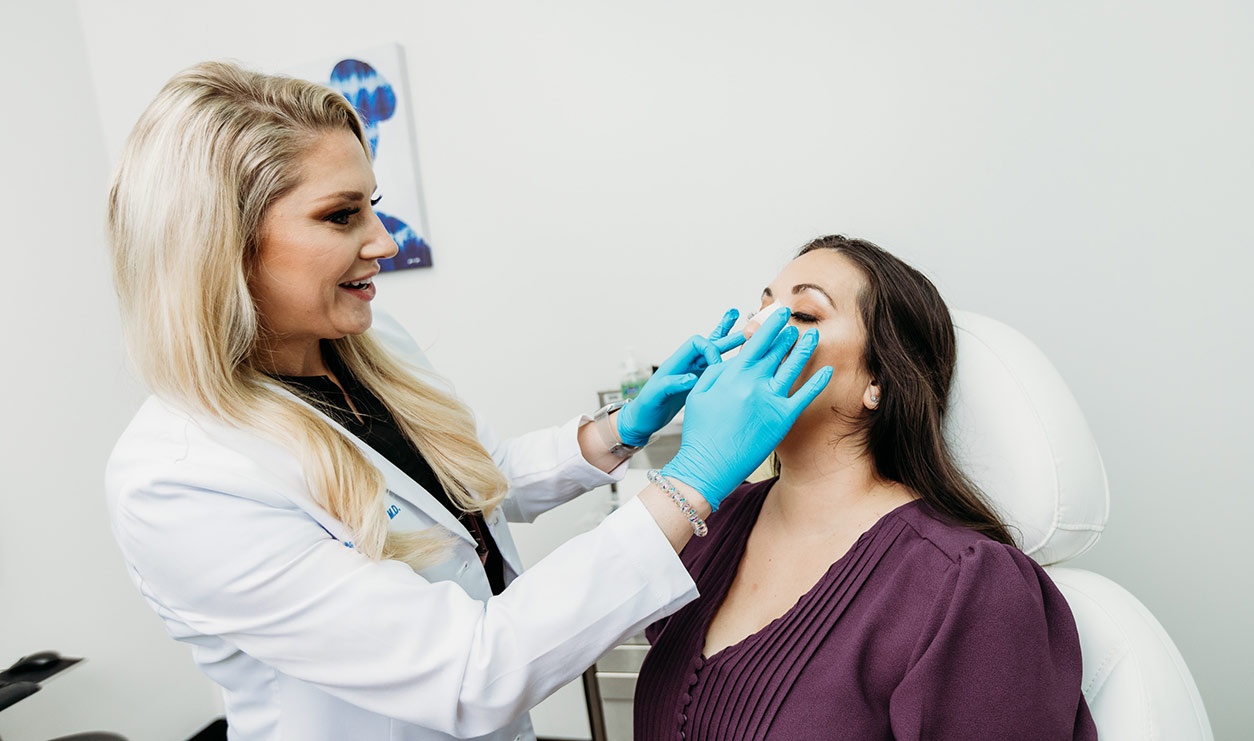
Patients experience a significant improvement in nasal breathing with our advanced Functional Sculpting technique.
Nasal airway remodeling or functional sculpting of the nasal airway is an advanced, noninvasive treatment offered by the Nose and Sinus Institute of Boca Raton. The procedure improves nasal airflow without affecting the nose’s external appearance. It is ideal for those experiencing breathing issues due to nasal valve narrowing or turbinate enlargement.

The vivaer functional sculpting focuses on the nasal valve area, which is the narrowest part of the nasal airway and often the site of airflow obstruction. The nasal valve area can collapse or narrow due to various reasons, including the natural anatomy, aging, or an injury.
This innovative approach:
During your examination, Dr. Nachlas or Dr. Hancock will perform a test called the ‘Cottle maneuver’, whereby the valve will be mechanically opened to see if relief is obtained. If it is, this suggests the valve is insufficient or narrowed and contributes to nasal airway obstruction. Ideal candidates usually meet the following criteria:
Due to the noninvasive nature of the treatment, patients can immediately resume their usual routine with no downtime. The procedure is painless, with only occasional temporary crusting inside the nose which is easily managed with care.
NSIBR patients enjoy many benefits of improved nasal airflow, including:
While the procedure is generally safe, it is important to be aware of potential risks and side effects, such as:
Choosing the Nose and Sinus Institute of Boca Raton means entrusting your care to leaders in nasal airway treatment, where patient comfort and effective results are top priorities. Request a consultation with one of our double board-certified surgeons for long-term relief.
Conveniently located in Boca Raton, our ENT doctors serve Boca Raton and all surrounding communities in Palm Beach and Broward Counties
Vivaer nasal airway remodeling primarily targets the nasal valve area, not the septum. For a deviated septum, septoplasty is usually recommended.
Coverage varies by insurance plan. It is recommended you consult your insurance provider to determine if functional sculpting of the airway is covered.
The cost of nasal airway remodeling varies based on the patient’s unique requirements, medical conditions, and whether any other treatment procedures may be necessary. It is best to request a consultation with our office for an accurate estimate.
A patient to test themselves to see if they have nasal valve issues contributing to their breathing problems. If you put a finger where the bottom of the nose meets the cheek (outside of the nostril) and then pull up and towards the outside of the eye, that will mechanically open up the valve. If that provides breathing relief, then that may indicate an underlying valve narrowing. An alternative method of determination is to use a Breath Rite strip. Those function by pulling the walls of the nose in a lateral direction.
Understanding the complexities of the nose’s inside and outside is imperative to providing long-lasting relief of sinonasal symptoms. Four major areas are studied in evaluating a patient for nasal obstruction: the nasal valves, the septum, the turbinates, and the sinuses. Dr. Nachlas and Dr. Hancock will thoroughly evaluate each of these areas. Most of the time, nasal obstruction is multifactorial, and each problem is addressed during the same office visit in a painless, minimally invasive fashion to provide relief. Other nose and sinus procedures commonly performed at the same time as a functional sculpting procedure include:
Addressing any cosmetic concerns you have about your nose with a Rhinoplasty surgery can also be done during the same operative session. The Nose and Sinus Institute of Boca Raton pioneered the Total Nose Approach™ to sinonasal surgery where all of your functional sinonasal complaints and cosmetic concerns can be addressed during one surgery, with one anesthetic, and one recovery.
Take charge of your life today! Call us or submit an online form, and you will be speaking with one of our talented surgeons in no time.
(561) 939-7352